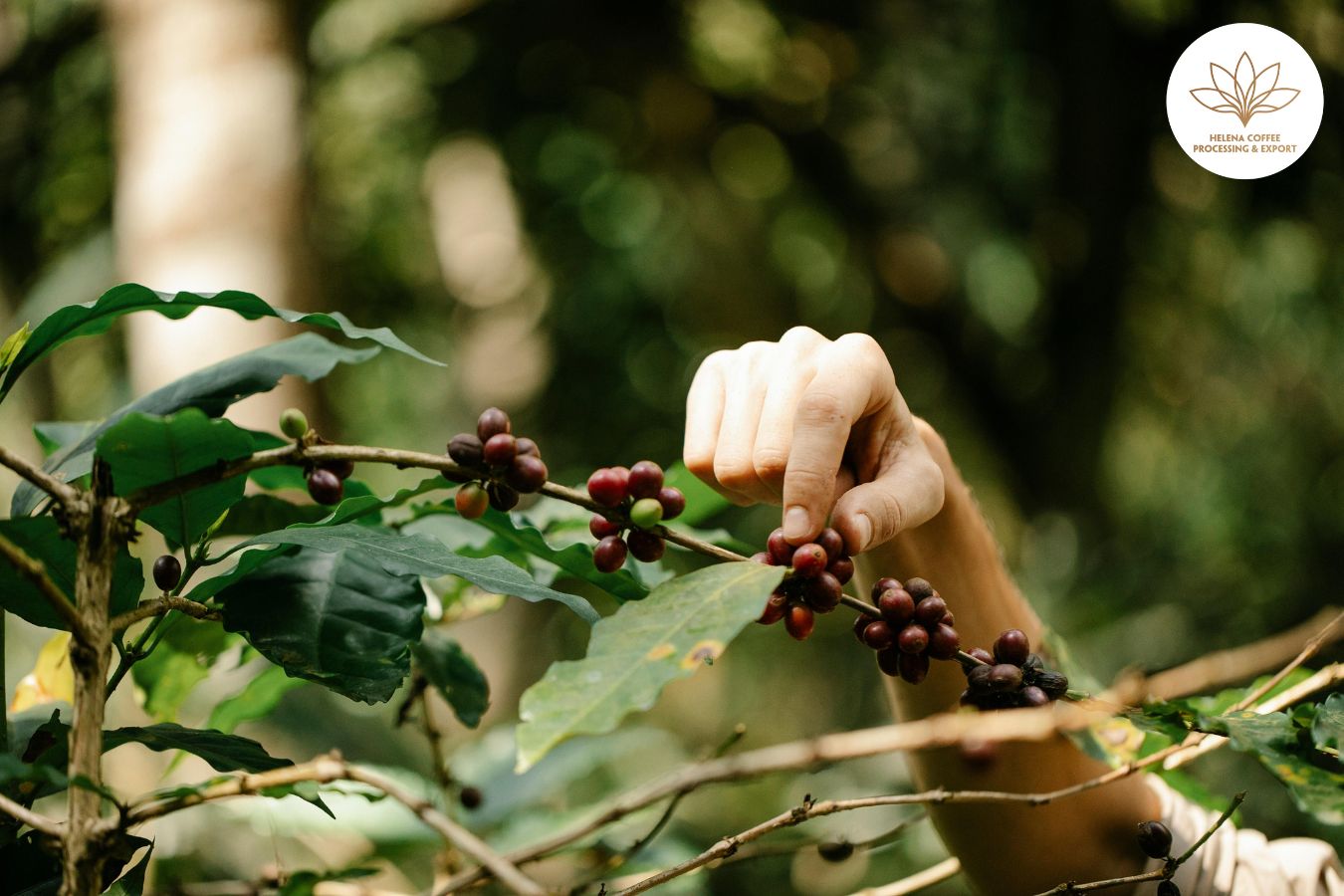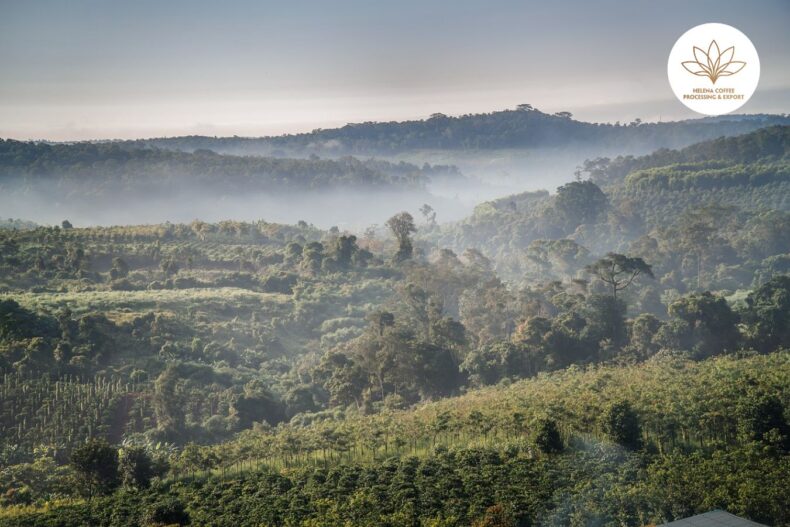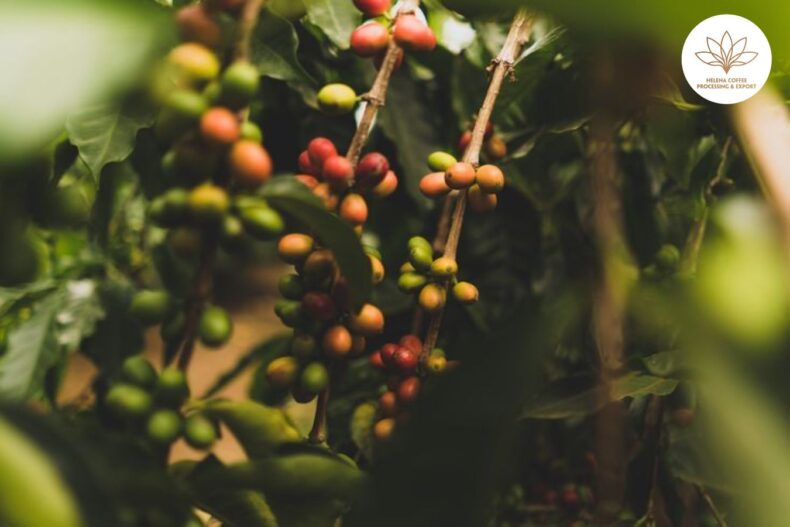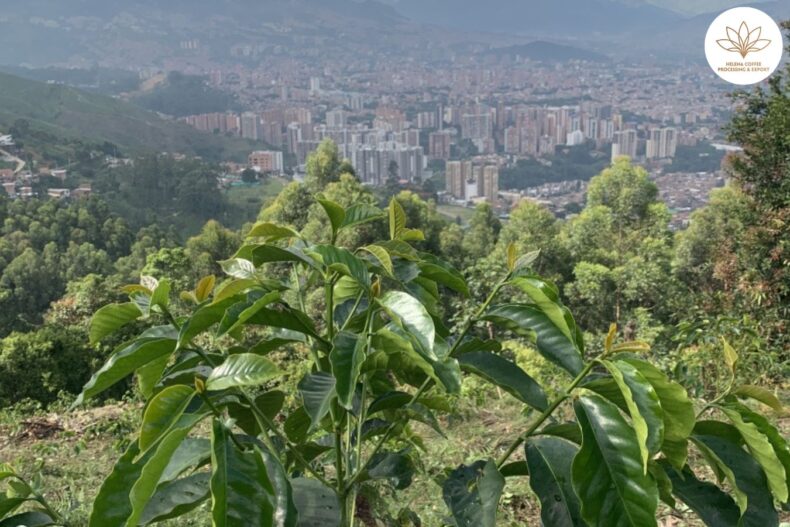
Coffee Farm: A plant variety is defined by unique traits within a species, such as flower color, leaf shape, plant height, and fruit flavor. These variations can emerge through natural selection, where individuals with certain advantageous traits are more likely to survive and reproduce, passing these traits to their offspring. Alternatively, they can arise from crossbreeding, a technique that merges the genetic material of two distinct plants to produce progeny that embody the desirable attributes of both parents, including enhanced productivity.
In light of this, some growers have embarked on cultivating their own unique plant varieties directly on their farms, aiming to achieve superior outcomes. But what considerations should be made when undertaking this initiative? To gain insight, I consulted with two experts in the field. Continue reading to uncover their perspectives on this topic.
What factors should be considered when selecting a variety of coffee?
When selecting a coffee variety, several critical factors merit attention, notably profitability, sustainability, and the environmental implications of the chosen variety.
Profitability stands as a cornerstone consideration, directly influencing the economic health and success of the farming venture. Coffee Farm: A variety deemed profitable typically showcases superior yield and productivity levels, substantially benefiting the farmer’s financial outcomes.
Sustainability also plays a pivotal role, underscoring the necessity to maintain a harmonious balance across the economic, social, and environmental spheres of agricultural practices. Coffee Farm: This principle ensures the long-term viability and resilience of the farming operation.
Linked closely to sustainability is the interplay between agricultural practices and environmental stewardship. Opting for sustainable coffee varieties means prioritizing those that make efficient use of natural resources, such as water and soil nutrients. Coffee Farm: The goal is to choose varieties that are well-suited to the local climate and soil conditions, necessitating minimal external inputs for their cultivation. Coffee Farm: This approach not only supports environmental conservation but also enhances the overall sustainability of the coffee farm.
Exploring new varieties and combinations in specialty coffee
Exploring new horizons with specialty coffee varieties and hybrids poses a significant challenge for farmers seeking to elevate beyond the market’s conventional offerings. The journey of Hacienda Venecia Coffee Farm in Caldas, Colombia, exemplifies this shift from commercial to specialty coffee production. To distinguish themselves in a competitive market, they’ve embarked on a quest to cultivate unique genetic strains within their estate.
Giovanni Cuesta Giraldo, the farm’s agronomist and director of agricultural production, shares insights into their ventures of developing proprietary coffee varieties. “At Hacienda Venecia, we’ve curated a diverse collection through exchanges with fellow growers, acquiring genetic materials uncommon in Colombia. After rigorous field testing, we selected certain strains for their cup quality, yield, and plant structure,” he explains.
The farm initially focused on two promising varieties. The first is characterized by its compact stature, short internodes, and small, juicy fruits reminiscent of peach syrup, yielding exceptional honey-processed coffees with floral notes. Coffee Farm: These plants feature a conical crown with shoots ranging from light green to slightly bronze, adorned with clusters of abundant fruit.
“The second strain resembles the Castillo variety, notable for its green shoots, semi-conical crown, and vigorous early growth. Coffee Farm: It excels in natural processing, predominantly revealing grape or wine-like flavors,” Giovanni notes.
Pursuing the development of their own unique strains, they’ve also experimented with crosses between a tall variety known for superior cup qualities and another with shorter internodes, yet still offering commendable cup characteristics.
This quest for the “ideal” coffee variety necessitates a blend of specific attributes: agronomically sound, high-yielding, and manageable throughout the growing and harvesting cycle. Ultimately, the goal is to produce coffees that not only stand out for their distinctive flavors but also resonate with the discerning tastes of consumers worldwide.
Process of crossbreeding
José Luis Atehortúa, with over 28 years of experience in working with genetic materials in Colombia and a veteran of the National Coffee Research Center (Cenicafé) and Café Granja la Esperanza, delves into the intricacies of the crossing process in coffee breeding.
He outlines the ideal phenotypic traits sought in progenies: compact stature, short internodes, increased productivity, and superior plant growth. Genotypically, the focus is on resistance to diseases such as rust, pink disease, and CBD.
José Luis breaks down the crossing procedure into detailed steps:
- Identify and pre-select branches at the preanthesis stage, where the flower is still closed and growing.
- Perform emasculation by removing the female parts of the flower to prevent self-pollination, and then cover the branch to protect it.
- Collect pollen from the male parent flowers.
- Wait for the general flowering period to commence.
- Carry out pollination by transferring the collected pollen to the pistils of the emasculated flowers and cover them again to ensure controlled fertilization.
- Allow three days for the flowers to undergo senescence.
When selecting varieties for crossing, José Luis advises starting with traditional coffee varieties, known for their proven agronomic qualities, as a foundation for breeding with specialty coffees to enhance or evolve their traits.
Giovanni further emphasizes the selection strategy, highlighting the importance of choosing parent plants with desirable characteristics. From the numerous offspring generated, a rigorous field selection process spanning up to three years is necessary to identify the most promising individuals.
He also describes the classical improvement approach in coffee, which involves five generations of self-fertilization among selected trees to stabilize the desired traits across the population. Coffee Farm: With each generational leap, the proportion of trees bearing the targeted characteristics increases, aiming for less than 5% undesirable trees by the fifth generation. Coffee Farm: This meticulous process can extend from 15 to 20 years, underscoring the dedication required for successful coffee breeding.
Benefits of cultivating proprietary coffee varieties on farms
The pursuit of higher profitability and exceptional coffee quality, coupled with the desire to mitigate the risks associated with untested genetic materials, motivates specialty coffee producers towards cultivating their own varieties. Coffee Farm: This strategy offers several compelling benefits.
Firstly, it grants producers direct control over the attributes of their coffee, enabling them to tailor and enhance these characteristics to suit the unique environmental conditions of their farms. Coffee Farm: This level of customization fosters the creation of distinctive cup profiles, minimizing the risks tied to the adoption of non-native varieties.
Cultivating proprietary varieties demands a more hands-on and dedicated approach from producers but rewards them with increased autonomy and the chance to stand out in a competitive market. It shifts away from reliance on widespread varieties, paving the way for innovation and the production of singular coffees.
José Luis highlights a key advantage of developing unique farm varieties: establishing a strong farm identity, positioning oneself at the forefront of market trends, and attracting exclusive clientele. However, it’s essential to note that such endeavors may initially yield lower productivity.
Despite the investment of time and resources required for breeding and cultivating unique varietals, the potential for high-quality, differentiated coffee can justify the effort. Coffee Farm: The economic value derived from premium quality and distinctiveness often compensates for any initial decrease in yield.
Giovanni elaborates on the strategic dimensions of specialty coffee production, distinguishing between short, medium, and long-term approaches. While fermentation processes can deliver quick improvements, the development of new varieties represents a more extended commitment. Identifying a variety with exceptional qualities offers the producer a unique market position, enabling them to decide between exclusive use or commercial distribution of the new varietal. This level of exclusivity not only enhances the farm’s identity but also opens up new avenues for market differentiation and premium pricing.
Improved suggestions for coffee farmers
José Luis underscores the importance for coffee producers of thoroughly understanding their farms and business strategies. He encourages them to decide whether to focus on quality or quantity and to assess the implications of their choice on resources and effort.
Giovanni provides tailored advice for selecting and developing coffee varieties:
- Define the characteristics of the ideal coffee tree for your farm.
- If existing varieties don’t meet these criteria, identify two varieties with the desired traits that could be genetically merged.
- Ensure that pollination and preparatory steps are executed by a professional to prevent cross-contamination.
- Maintain strict discipline throughout the breeding process and subsequent evaluation of the new varieties.
- Conduct a meticulous assessment of each tree, considering factors like size, yield, cup quality, conversion rate from cherry to parchment, threshing efficiency, and bean size.
- Leverage experience in specialty coffee production and marketing to introduce your innovation to customers, setting expectations beforehand.
While the journey to develop unique coffee varieties may seem daunting, with expert guidance and a clear vision for the desired outcome, success is attainable. This process promises significant rewards but requires setting realistic goals, understanding the time frame for results, and seeking specialized advice to mitigate risks and avoid costly mistakes.
FAQS:


